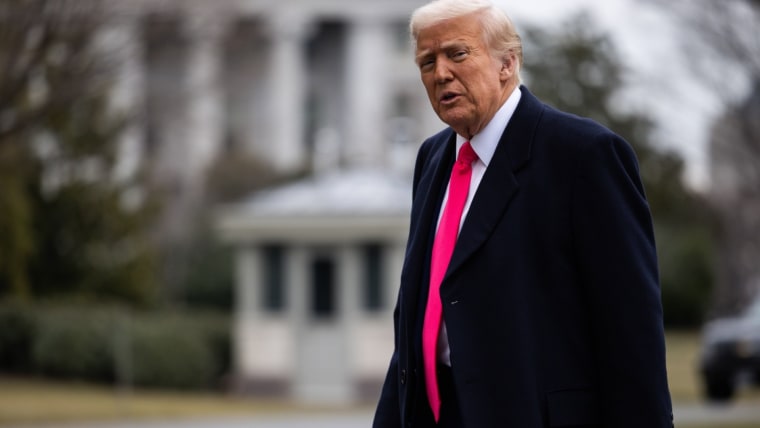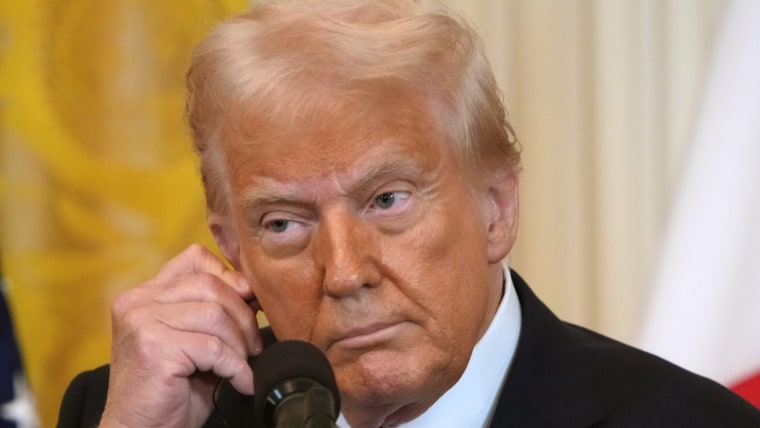In recent weeks, President Donald Trump has imagined himself as a kind of American monarch or a powerful president needing a third term to save this nation. With Trump, it is always hard to separate the pure flights of fantasy from the things he really might want to do. But should the president indeed push to run for a third term, despite his vivid imagination and considerable political skills, Trump would face nigh impassable obstacles to remain in the Oval Office beyond Jan. 20, 2029.
The president has alluded to the possibility of a third term many times in the past, including right after the November election when he told House Republicans, “I suspect I won’t be running again unless you say, ‘He’s so good we’ve got to figure something else out.’”
No person shall be elected to the office of the President more than twice.”
– The 22nd Amendment to the Constitution
Then, on Feb. 21, at a White House event celebrating Black History Month, the president went off-script, asking his audience, “Should I run again? You tell me.” Politico reports that “The crowd, which included elected officials, like Republicans Sen. Tim Scott of South Carolina and Rep. John James of Michigan, as well as political appointees and athletes like famed golfer Tiger Woods, responded with chants of: 'Four more years!'”
He is not the only one raising the possibility of an effort to win a third term. At the annual gathering of the Conservative Political Action Conference last week, attendees wore stickers touting a “Trump Third Term Project.” Trump’s former White House adviser Steve Bannon proclaimed, “The future of America is MAGA, and the future of MAGA is Donald J. Trump. We want Trump in 2028.”
As the crowd erupted, Bannon added, “A man like Trump only comes along once or twice in a country’s history, right? We want Trump.”
The president is indeed a unique figure in American history, with a devoted following most other politicians can only dream of. In addition, pushing the possibility of a third term keeps the president in the headlines and, as Trump noted in his White House remarks, is sure to stir up “controversy.” It also is a way of fending off the tendency to brand him a “lame-duck president” whose sway in Washington will decline as his second term progresses.

But the plain text of the Constitution stands in the way of Trump running for a third term. The 22nd Amendment reads, “No person shall be elected to the office of the President more than twice, and no person who has held the office of President, or acted as President, for more than two years of a term to which some other person was elected President shall be elected to the office of the President more than once.”
If Trump and his allies decide he should run again, they will likely try to twist the amendment’s meaning. In September 2020, as he was campaigning for a second term, the president contemplated getting around the plain language of the 22nd Amendment: “After [getting re-elected], we’ll negotiate, right? Because we’re probably — based on the way we were treated — we are probably entitled to another four after that.”
A look at history is helpful as we contemplate MAGA’s arguments.
His allies may also claim, as a contributor to The American Conservative argued, that “those who supported the amendment more than 70 years ago could not have foreseen the prospect of a one-term president who lost the office but who later regained it in a subsequent election.” And in making these arguments, they will likely count on a MAGA-friendly Supreme Court to find that the amendment does not mean what it says.
A look at history is helpful as we contemplate MAGA’s arguments.
The Founders considered limiting the president to one seven-year term but eventually settled on a four-year term with no term limits. In 1875, as allies of Ulysses S. Grant hoped he would run for a third term, the House of Representatives overwhelmingly passed a resolution saying that “The precedent established by Washington and other Presidents of the United States, in retiring from the Presidential office after their second term, has become by universal concurrence a part of our republican system of government.’”
Nearly seventy years later, President Franklin D. Roosevelt broke with that precedent, winning a third and then a fourth term. Roosevelt’s tenure pushed the idea of term limits to the forefront. Thomas Dewey, the Republican nominee in the 1944 presidential election, said, “Four terms or 16 years is the most dangerous threat to our freedom ever proposed.” Three years later, Republicans and conservative Southern Democrats passed the 22nd Amendment, which was added to the Constitution in 1951.
The debates about the amendment make clear that it was intended to limit presidential tenure in office, not just the number of times a single person can run for the White House. As political scientist Alan P. Grimes explained, proponents hoped “the twenty-second amendment would strengthen and safeguard democracy from what they believed to be its greatest danger: the aggrandizement, consolidation, and even usurpation of political power by the executive branch. For them, the twenty-second amendment was not an undemocratic restraint upon the popular will, but a democratic restraint upon any future, dangerously ambitious demagogue.”

On Feb. 11, two judges on the Tenth Circuit Court of Appeals embraced that understanding. They stated unequivocally, “The Twenty-second Amendment … mandates that President Trump cannot be elected to another term after the current one.”
A third judge, Trump-appointed Judge Allison Eid, left the door ajar when she described the question of whether the 22nd Amendment applies to Trump as a “novel and complex constitutional question." But not even Trump’s Attorney General Pam Bondi believes that. During her confirmation hearing, she said the president could not serve a third term “unless they change the Constitution.”
At least one Republican has already tried to start this process: Rep. Andy Ogles, of Tennessee, filed legislation last month to change the Constitution’s 22nd Amendment so the president could serve “for up to but no more than three terms.” As Ogles surely knows, however, there is no realistic chance that his proposal will garner the necessary two-thirds vote in the House and Senate and be ratified by three-quarters of the states. And because states determine ballot eligibility, without such an amendment, there is no way Trump can be elected for a third term.
This is not to say that the president won’t try anyway. But Trump’s path to power beyond his current term will not come through the electoral process.
